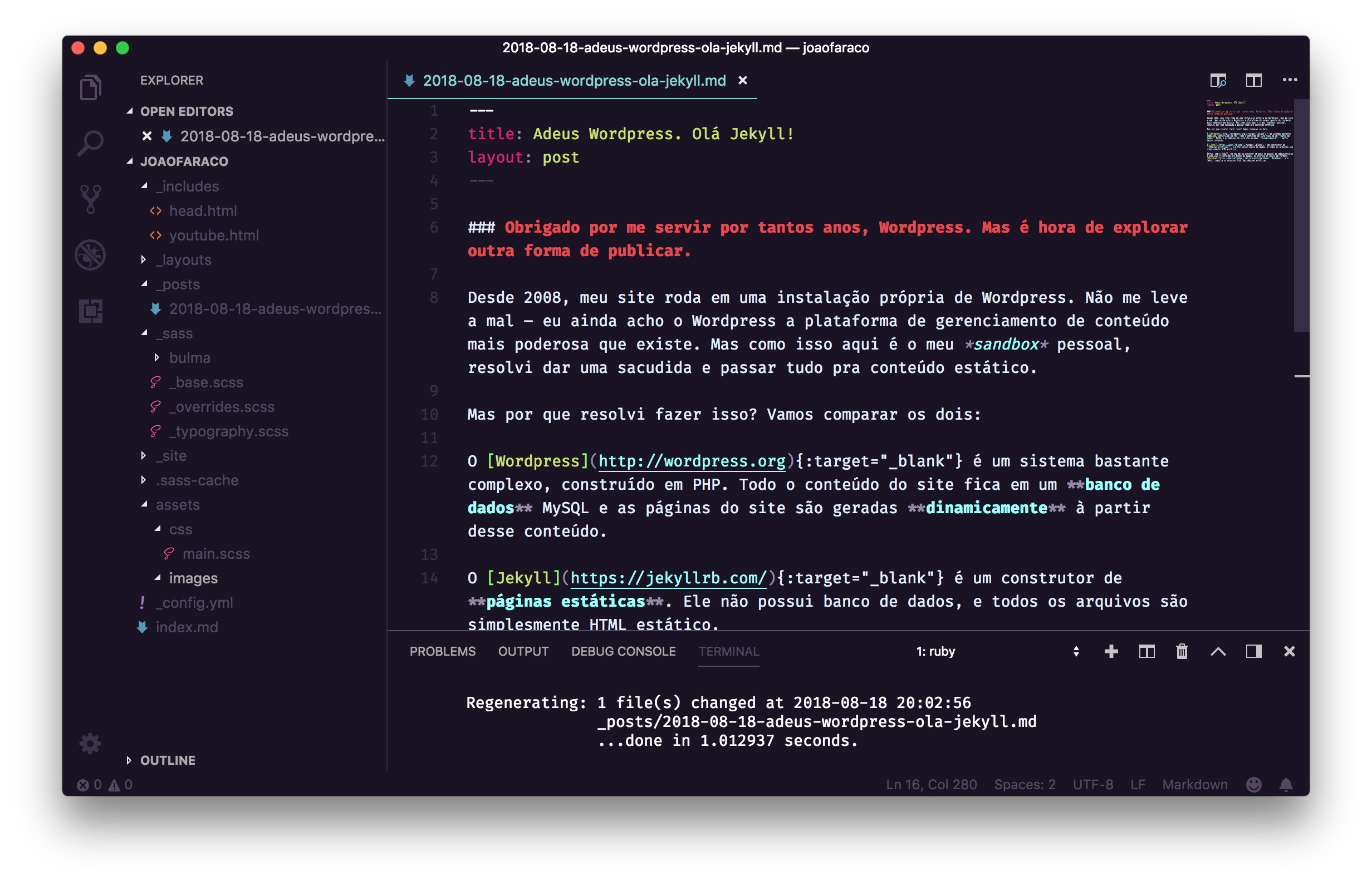Since 2008, my website has been running on a self-hosted Wordpress installation. Don’t get me wrong – I still think Wordpress is the most powerful content management platform out there. But since this here is my personal sandbox, I decided to shake things up and switch everything to static content.
Wordpress vs. Jekyll
But why did I decide to do this? Let’s compare the two:
- Wordpress is a quite complex system, built in PHP. All site content is stored in a MySQL database, and the site’s pages are dynamically generated from that content.
- Jekyll is a static site generator. It has no database, and all files are simply static HTML.
So, with Jekyll, instead of writing a post in the admin panel and publishing the content to the database, I write the posts in Markdown format, and Jekyll compiles the .html files of the static pages.

Why Jekyll?
It may seem a bit inconvenient to publish this way, but there are some advantages:
- I no longer have to pay for hosting – the files are kept in a Github repository, which is free.
- The structure is simpler to maintain – no database and fewer files to manage.
- All maintenance is done via version control, so backup happens automatically.
- The site is much faster, as the server doesn’t need to communicate with a database every time a page loads.
- Without a database, it’s much more secure, preventing a hacker from performing SQL injection, for example.
In other words, maintaining a server with PHP + MySQL and a Wordpress installation and its plugins that need constant updates just to serve a site that I update infrequently seems like overkill. I even considered Medium, but you, the reader, deserve more than pop-ups asking you to subscribe to the service, and I deserve more than a platform that uses my content to promote itself.
If you’re interested and want to do something similar, here is an article that provides a step-by-step guide on how to set up a blog using Jekyll Now, and explains the fundamental concepts of Jekyll.
P.S.: I took advantage of this migration to experiment with the fascinating Bulma, as a CSS framework.
Contents: